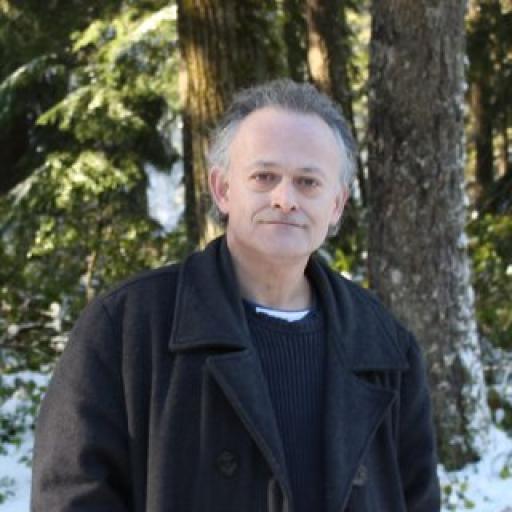Tolkien and Welsh/Tolkien a Chymraeg by Mark T. Hooker - Review by John Good
I like this book. It is challenging but accessible, clear and intellectually good fun. At the outset, the author tells us that this is a “book by a linguist … making the topic accessible to a larger audience.” The truth of this is immediately found in his definition of the traditional Welsh poetic form the cywydd, which “ consists of a series of seven-syllable lines in rhyming couplets, with all lines written in cynghanedd, a concept of sound-arrangement within one line, using stress, alliteration and rhyme.”
A list of relevant technical definitions that maybe be unfamiliar to the general reader are found upfront, where they are needed and chapter-end notes provide convenient references, additional material and relevant web links. Tolkien aficionados and linguists will be in their natural habitat although, being neither, I was thoroughly at home between the covers. Though not essential, as everything is translated, a familiarity with Welsh is useful, but the native Welsh, novice and monoglot American/English speaker will all find plenty to entertain/inform them, the chapters calling to mind short detective stories with often similarly surprising developments; the whole thing suitable for browsing or immersion.
As to J.R.R. and the Welsh Language, our author lets the Hobbit’s author speak:
“I find the Welsh Language especially attractive.” At another time Tolkien adds that the Welsh components (of The Lord of the Rings) are what have “given perhaps more pleasure to more readers than anything else in it.” And the quote Welsh people will find most endearing “… even though I first only saw it (Welsh) on coal trucks, I always wanted to know what it was about.” Wales seems to appear and re-appear like Gandalf the magician, often when you least expect it. For example, even The Hobbit was written while Tolkien was professor of Anglo Saxon at Pembroke College, Oxford where his close friend was C.S. Lewis! In his undergraduate days, again at Oxford, Sir John Rhys was his Professor of Celtic Languages. Rhys held some interesting views on his native Welsh, noting that Welsh literature abounds “in allusions to heroes who are usually described with the aid of the mother’s name” such as Gwydion son of Don and Arianrhod daughter of Don. Apparently, in Wales ’into the nineteenth century, some wives did not change their names when they married, and sons could choose to use their father’s or mother’s name…’ I’ve always thought of Welsh women as founder members of the strong, silent type! Taking this a stage further, the mother of the hero of The Hobbit, Bilbo Baggins, “was the fabulous Belladonna Took…” and there were rumors of a fairy wife in the family; the whole episode reminiscent of the old Welsh Tale Meddygon Myddfai/ The Physicians of Myddfai. The undergrowth thickens as we are reminded that Welsh myth and literature were “part of the ‘leaf mould’ of Tolkien’s mind…”
One of Tolkien’s place-name creations/borrowings Gwynfa is interesting. We learn that it is associated with a dragon as is a real Gwynfa in Wales, this idea being reinforced by reference to the story about Merlin, Vortigern and the white and red dragons fighting; another tale from Cymru. Gwynfa means a holy or white place and by extension paradise. Over the years and by foreign language invasion we are told that Gwynfa became Wenvoe became Whitland. Dinbych (Welsh for Small Fort/Din Bach) became Tenby; Tyndyrn (Welsh for King’s Fort) became Tintern - as in the Abbey - with the original meanings becoming all but lost. What is truly amazing is that Tolkien’s invented languages show the same type of detailed, linguistically logical progression. There are even those amongst us, in the real world of 2012, writing and speaking Elvish!
A little further along, Isaac Taylor is referenced as having said that “the names of important rivers, posse an almost indestructible vitality.” They are a ‘type of linguistic fossil …’ Most of the rivers in the UK carry often modified Celtic names. Take the River Avon for example which is a bilingual tautology: Avon (afon) is Welsh for river. The English apparently didn’t know this, thereby creating the name River River! The River Usk (Latin Isca, Welsh/Irish Wysg [as in whiskey/Water of life]) is again River River. Bree Hill in Tolkien is Hill Hill and even more hilarious to our linguistic brethren we are informed that a local landmark in Tolkien’s youth, Bredon Hill (Celtic/Old English/English), is indeed Hill Hill Hill! It starts you mentally scanning local, real place names to see if you can find Lake Lake or Town Town. (I found Table Mesa in my area.)
Tolkien’s created personal and family names are no less invested. The likes of Maggot, Boffin of Yale and Took are explained along with real and created family histories going back to pre-Norman days. Castles, prominences and land marks, as in The Carrock, find real-life exemplars in Castell Carreg Cennen and the like; many replete with similar attendant legends. One is left startled by the shear detail and linguistic consistency of Tolkien’s literary creations. Whether tugged on the sleeve by place or personal names, or a compelling story set in a vivid and believable geography, we are more than willing - in fact eager - to fully enter the illusion of Middle Earth.
The Welsh have always been intensely interested in the history and origins of names, both personal and place. This book will have you looking under your verbal beds and up in dusty attics, hoping to find unexpected yet friendly ghosts of meaning in your own lettered heritage and Shire. I can only hope that one of these days the author writes a sequel: A comprehensive account of actual Welsh place and personal names.
Hwyl am y tro/Bye for now, John Good/Sioni Dda.
El Mirage, Arizona.
















